













The magazine of the art-form of the photo-essay
“A free, really high quality photo-essay magazine. Fabulous!”
Stephen Fry. British actor, writer and film & documentary maker

April 2014 issue


by Karen Marshall


From 1987 through 1997, I spent extensive periods of time photographing and collecting testimonies from a group of
Navajo Indians in northern Arizona who were being forced from ancestral lands by a Public Law (93-531) enacted by
the United States Congress in 1974. The redistricting of a jointly used reservation area resulted in relocation on the
Hopi and Navajo reservations. One hundred Hopi Indians were affected by the law but for the Navajo the impact was
far more dramatic. More then 11,000 Navajo Indians were ordered to leave their homeland, resulting in drastic
disruptions in their ability to practice traditional beliefs and maintain ancient ways of life.
This modern day chapter of American Indian politics, the result of arbitrary decisions made in Washington a century
ago, pitted one tribe against another. Wrought with corruption and cross-cultural misinterpretations, the relocation
issue created heartache and displacement for the hundreds of traditional Navajo families who were uprooted.
My intention was to bear witness, to tell the story of the Navajos. My goal was to capture the changing world of this
earth-based people who because of circumstances far beyond their control, were fighting to retain their traditional
beliefs.
By witnessing these people during a crucial moment in their history, the documentation raises questions of universal
concern, especially the plight of a non-dominant culture as it dealt with the intrusion of the late 20th century.
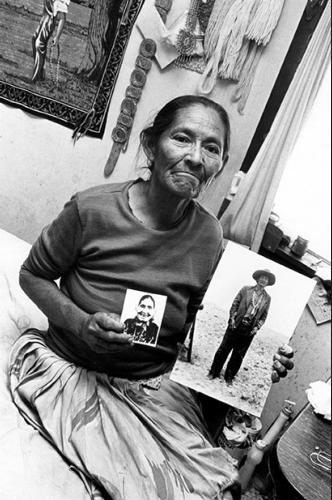
ANNA BEGAY “This was my mother. This was my father. I am 55 years old. We have always lived here. I was
born here, before the use of the wagon I have been here. I will not move.”
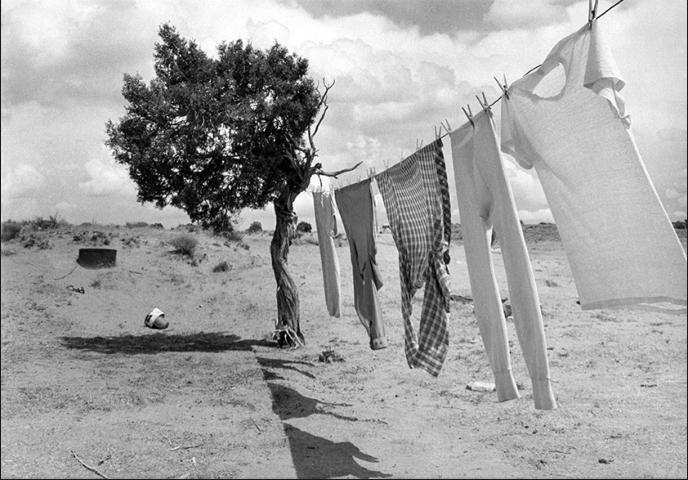
SAM WILSON’S CLOTHES DRY.
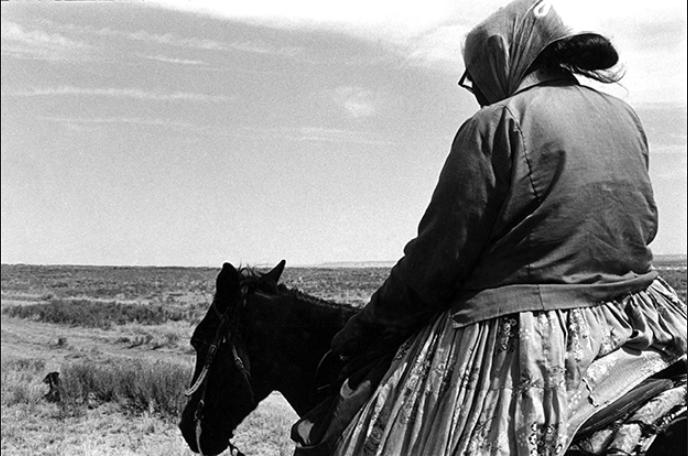
WOMAN ON HORSE WITH DOG “Everywhere I look there is no sign of life, no livestock. I look out and remember
when there was livestock all about. One could see a cloud of dust where a flock of sheep was being herded; drawn by
a wagon that was hitched to horses. Now there is nothing. Only the wind fills the space.”
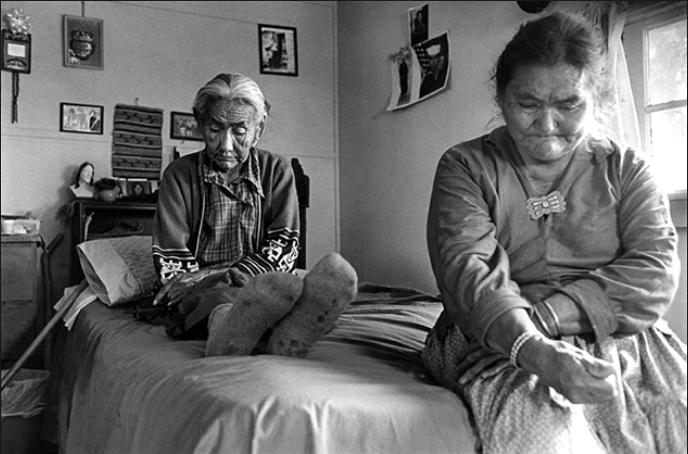
EMMA AND ELEANOR, MOTHER AND DAUGHTER “My daughter’s son pulled a gun on a Bureau of Indian Affairs
agent last week. The agent was trying to harass his mother into relocating and he just couldn’t bear it anymore. Why
do they bother us? There is always trouble. They know that we will not move.”
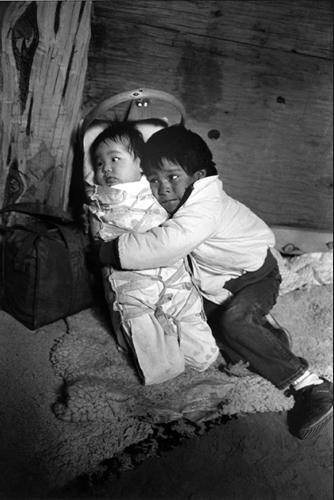
BROTHER WITH SISTER ON CRADLE BOARD When a child is born their umbilical cord is buried on their mother’s
land and a cradleboard is made from a tree on her land. When the baby outgrows the board, that too is buried on the
land. Both burial spots become sacred places for the child to pray.
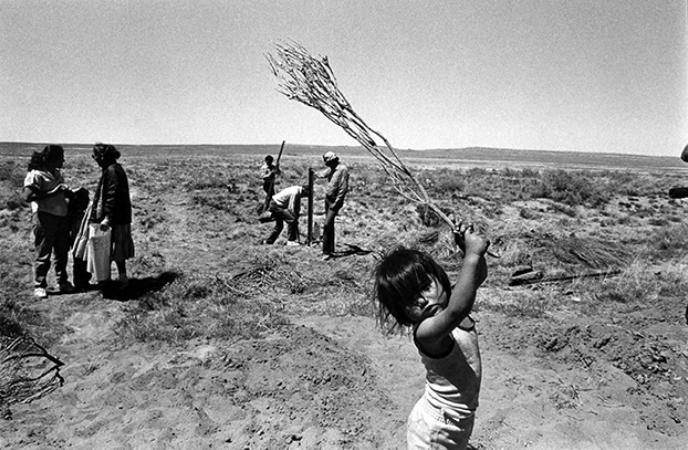
ACTION AT STAR MOUNTAIN Four generations of Navajo, 40 people, take over a fencing project near a sacred site
and tear down one-and-a-half miles of fence that defined new reservation boundaries, separating them from a site their
grandfathers told them to protect.
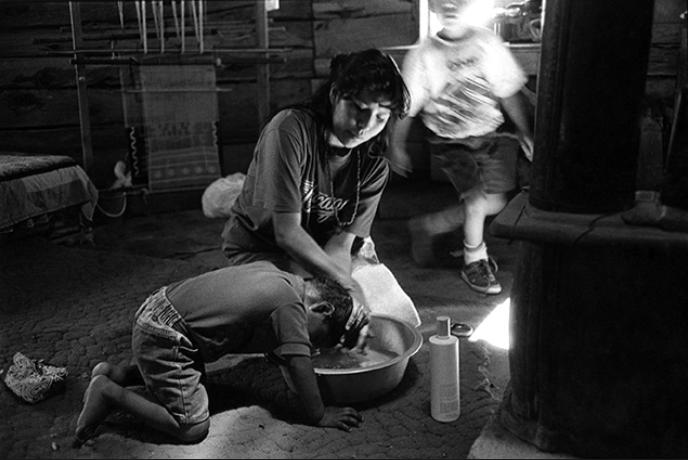
BESSIE BETONY WITH HER SONS Washing hair with water hauled from the windmill down the road. “…Our children
are important to us. They are our body. They are our thoughts. They are our future bloodlines and our reason for
existence. Even when they mature, they are still our children.”
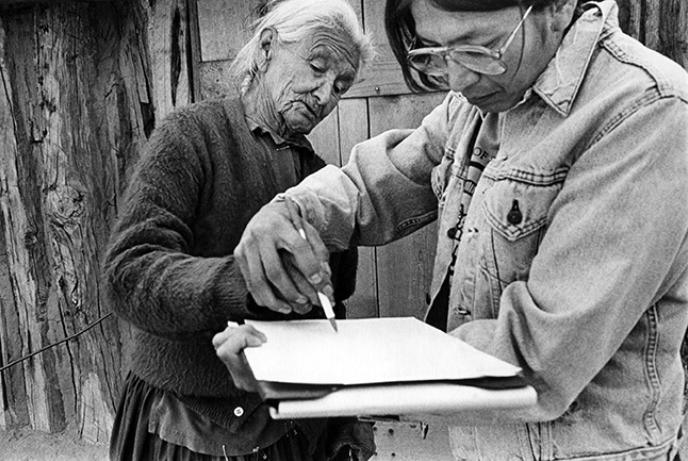
OSCAR WHITEHAIR’S SISTER-IN-LAW CLIZZIE A young man helps Clizzie sign an affidavit against harassment by
Bureau of Indian Affairs agents with an “X” to signify name. “They came up here when they knew that they would be
alone and told me that if I did not move that someone would come and take all of my animals away. Then they would
take me into a field and kick me around and leave me there. I will not let them scare me in this way.”
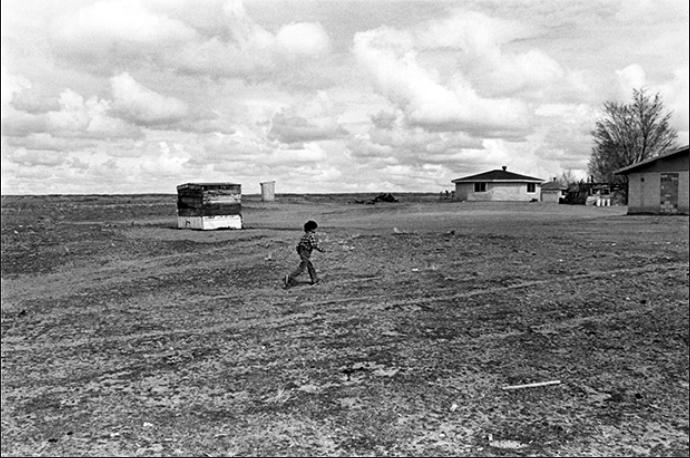
YOUNG BOY “Earth, heaven, the atmosphere, sky, star, sun moon. These are our order of our universe. Within this
order there are changes. Sunrise, high noon, sunset, the sun shines and darkness comes. The earth changes through
the four seasons. Spring, summer, fall, winter. Days continue into months that are governed by the moon. Full moon,
half moon, quarter moon, from the first sun rays and from the atmosphere life grows. This is the universal order that
we know. Now this is being altered, causing disorder…..”
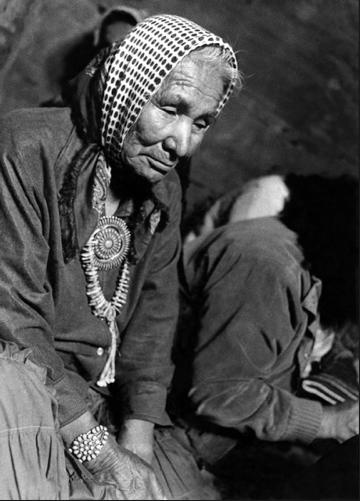
MARY T. BEGAY She died three weeks after this photograph was taken. In Navajo tradition if a person dies suddenly
in the family Hogan (traditional round house), the family must relocate to a new structure near the home site.
Because of a building freeze on the land (as a result of Public Law 93-531), and the family’s resistance to relocation
off their land, they became homeless after her death.
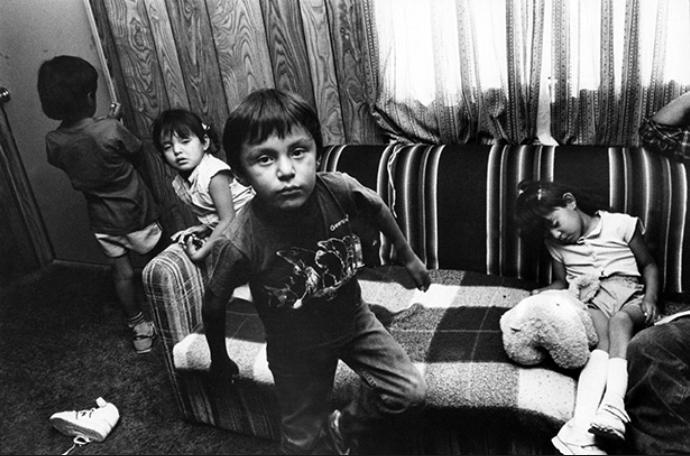
TRAILER HOME. TUBA CITY This family relocated off the reservation. They were given a large house. Lack of job
skills, alcohol abuse and lack of money forced them to lose their relocation house. They now live in a trailer in a
reservation city.
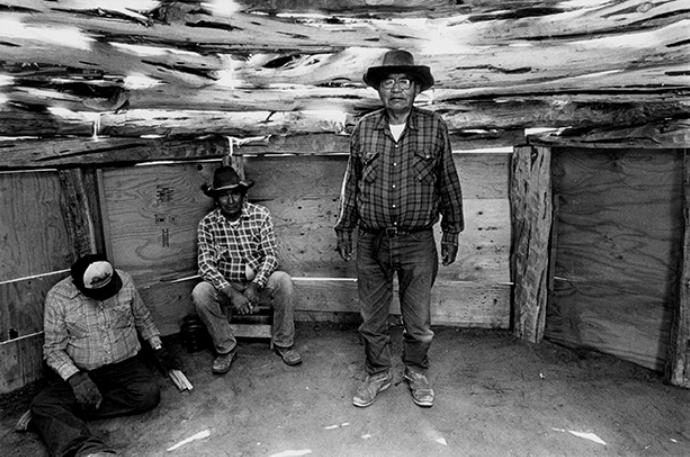
FIRST CEREMONIAL HOGAN BEING BUILD ON THE ‘NEW LANDS’ (NEW RESERVATION AREA FOR NAVAJO
WHO RELOCATED) RAM HERDER. MEDICINE MAN. “I go back to my original land to gather plants for ceremony. I
do not know the plants here and they do not know me. I do not know what the relocation will bring.”
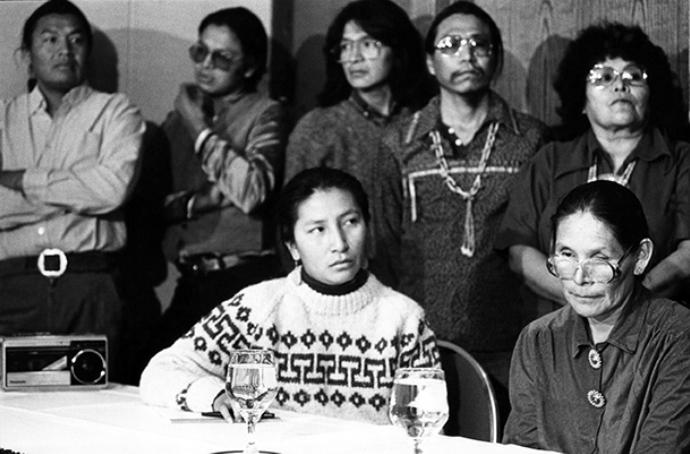
WASHINGTON PRESS CLUB. WASHINGTON D.C. JANUARY 1988 Plaintiffs filing a First Amendment lawsuit,
Manybeads vs. the United States Government in an attempt to make the United States government understand that
forced relocation infringed on the elder’s religious beliefs.
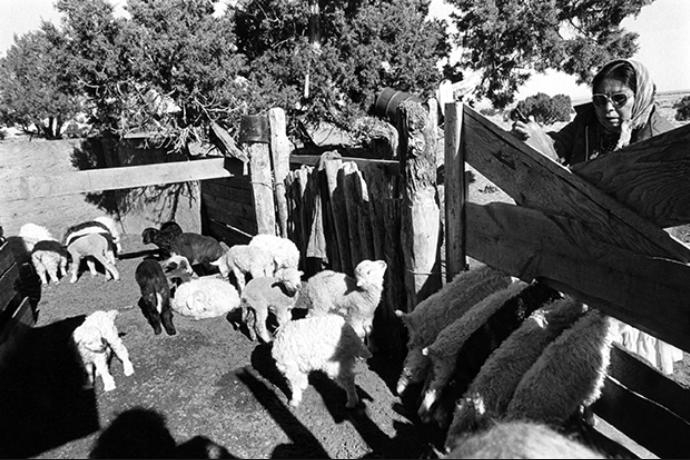
MAE TSO WITH NEW LAMBS “When I first became aware of who I am, I found myself herding sheep, that was my
first awareness of who I am. Learn how to herd sheep I was told. This is how to become independent; it is a
meaningful life. These were the teachings I remember.”
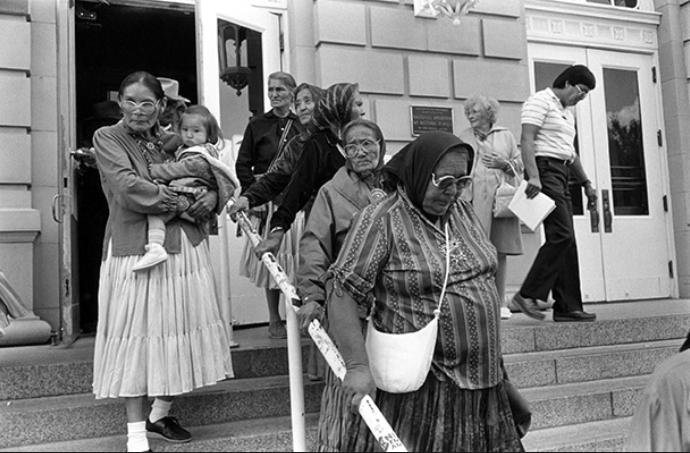
FEDERAL COURT HOUSE. PRESCOTT, ARIZONA Hearings for Manybeads vs. the United States Government.
Elders leave for recess. The case was turned down by Federal District Court and was in the 9th Circuit Appeals Court
for several years. Eventually, long-term leases were established for elders who wished to remain on their land.











